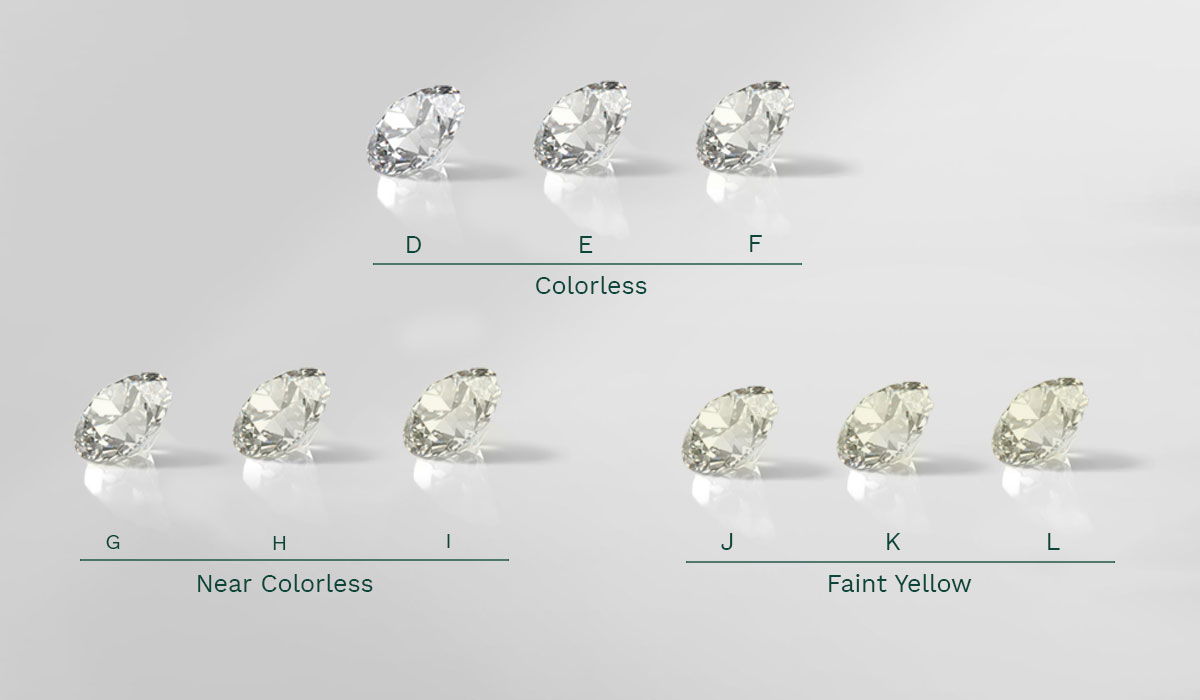Types of Colourless Diamonds

Diamonds, often celebrated for their brilliant hues and the rainbow of colors they can exhibit, are not all about sparkle and vibrancy. In the realm of gems, colorless diamonds stand apart with their understated elegance, providing a timeless appeal. These diamonds are prized for their purity and the way they epitomize the quintessential diamond appearance. In understanding colorless diamonds, it's paramount to delve into the nuances of their categorization, properties, and the allure they hold. Let's explore the varying types and intrinsic characteristics of colorless diamonds, laying the foundation with the most critical features before delving deeper into their fascinating world.
Understanding Colorless Diamonds
Colorless diamonds, often referred to as 'white diamonds,' are graded on a scale from D (no hue) to Z (a light yellow or brown color). The diamonds that fall within the D-F range are considered truly colorless, whereas those in the G-J range are near-colorless with slight tones only detectable by a gemologist. Beyond J, the diamond starts to exhibit more noticeable color, thus decreasing its value in the context of colorlessness. The value of a diamond in the colorless range significantly diminishes as it moves from D to J, largely due to the rarity and demand for diamonds that display no color whatsoever.
Types of Colorless Diamonds
- Traditional White Diamonds: These are the most widely recognized type of colorless diamonds. Mined from several locations around the globe, they are evaluated based on the 4Cs (Cut, Color, Clarity, and Carat weight), with color playing a pivotal role in their valuation. Traditional white diamonds in the D-F range are highly sought after for engagement rings and fine jewelry.
- Lab-Created White Diamonds: Technological advancements have allowed for the creation of diamonds that mimic the properties of natural diamonds in laboratories. These lab-created diamonds offer a more sustainable and often less expensive option while maintaining the aesthetic and physical properties of their mined counterparts. They can achieve color grades as high as natural diamonds, making them a popular choice for consumers prioritizing ethical and cost-effective considerations.
- Type IIa Diamonds: Comprising only 1-2% of all natural diamonds, Type IIa diamonds are the purest form of carbon, free from nitrogen impurities that can cause color variations. These diamonds can be either colorless or exhibit a range of colors but are noted for their potential to achieve the highest levels of colorlessness (D color rating). They are incredibly rare and highly valued.
Factors Influencing the Appearance and Value of Colorless Diamonds
The perception and worth of colorless diamonds are not determined solely by their absence of color. Several other factors play critical roles, including cut, clarity, and carat weight. The cut of a diamond influences its brilliance and sparkle, potentially making a lower-grade color look more colorless in comparison to poorly cut diamonds with higher color grades. Clarity refers to the absence of inclusions or blemishes in the diamond, which can affect its sparkle and thus its apparent color. Larger diamonds tend to show more color, making high-grade colorless diamonds at larger carat weights particularly rare and valuable.
Caring for Colorless Diamonds
Maintaining the mesmerizing beauty of colorless diamonds requires routine care. Regular cleaning with a soft-bristled brush, warm water, and mild soap can remove oils and residues that might diminish the stone's brilliance. It's also advisable to have them inspected by a professional jeweler annually to check for any settings that may have become loose. Proper storage is crucial to avoid scratches or damage; storing diamonds in individual soft cloth pouches or a dedicated jewelry box with compartments is recommended.
The allure of colorless diamonds lies not just in their appearance but in the symbolism of purity, rarity, and timeless elegance they convey. From the most sought-after D-grade diamonds to the technological marvel of lab-created gems, and the exceptional rarity of Type IIa diamonds, each category offers a unique appeal. As symbols of devotion and luxury, colorless diamonds continue to capture hearts and imaginations around the world, transcending trends and epochs with their enduring beauty.
Understanding the intricacies of colorless diamonds, from grading and types to care and valuation, enables both enthusiasts and potential buyers to appreciate the depth of allure these gemstones possess. Whether for an engagement ring, a significant investment, or a personal treasure, colorless diamonds offer unmatched beauty and charm that last for generations. As the epitome of sophistication, they are not just jewels but legacies, encapsulating moments and emotions that are as timeless as the diamonds themselves.
In conclusion, the world of colorless diamonds is rich and multifaceted, encompassing a range of types from traditional and lab-created to the exceptionally rare Type IIa diamonds. Each offers distinct qualities, with factors such as cut, clarity, and carat weight playing significant roles in their appearance and value. Careful maintenance ensures their lasting appeal, making colorless diamonds a profound symbol of eternal elegance and beauty. As one delves deeper into their understanding, the enchantment of colorless diamonds becomes ever more apparent, revealing a realm of exquisite purity and brilliance that continues to fascinate and inspire.